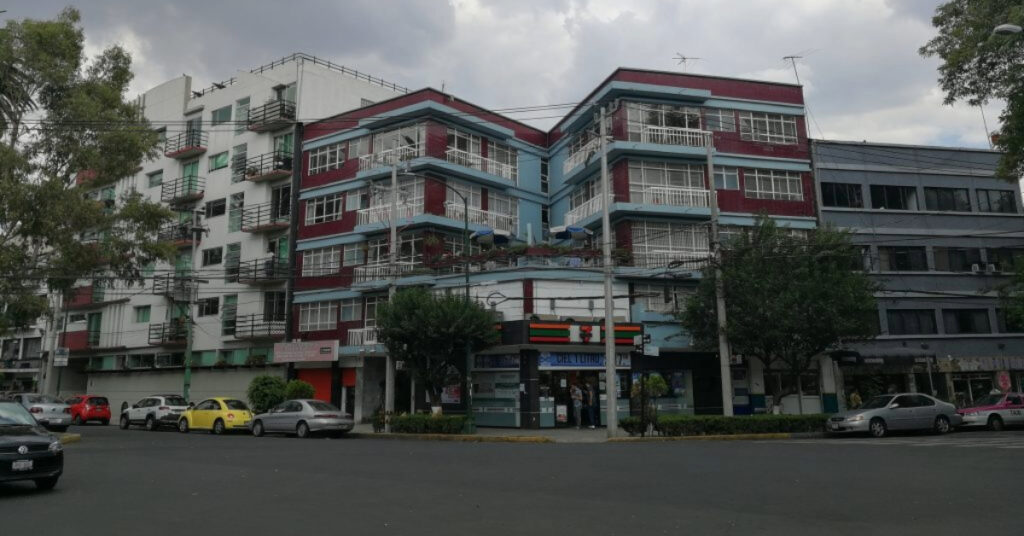The Mexican real estate market is experiencing a growing imbalance between housing supply and demand, exacerbated by delays in building permits, rising construction costs, and limited land availability. According to Jorge Combe, founding partner of DD360 and specialist in residential financing for the University Tower project, the ongoing challenges in the construction industry are leading to a significant reduction in the number of new apartments being built. This situation, he warns, is likely to result in higher housing prices in the coming years.
Speaking at the seminar on “The Evolution of Vertical Housing in Mexico,” Combe explained that developers have struggled to meet demand due to multiple factors. “The supply of new apartments will fall because not enough buildings are being built, although demand continues due to demographic factors,” he said. The pandemic, coupled with inflation in building materials, has caused delays in construction, which means that many of the apartments slated for delivery in 2026, 2027, or even 2028 are currently not in production. This could drive inflation or capital gains in vertical housing in key urban areas.
A Widening Supply-Demand Gap
Data from real estate consultancy 4S Real Estate supports Combe’s warning. In Mexico, approximately 400,000 homes are sold annually, but only half of these are new constructions. The lack of available land, especially in desirable locations, combined with lengthy bureaucratic processes, has resulted in a shortfall of new development projects. Marisol Becerra, MX-Centro regional partner at 4S Real Estate, agrees that the construction slowdown is becoming a serious issue, citing the fact that some permits take up to five years to clear.
“This has been reflected in less supply and projects that have been incorporated into the market,” Becerra noted. “We are still carrying a backlog of projects that began to be planned a decade ago.”
As demand for housing continues to grow due to demographic trends—such as an increasing number of divorces and a rising life expectancy—this backlog is putting more pressure on the market. “We have a very important challenge due to the gap between the need for housing and what is available on the market,” Becerra added.
According to 4S Real Estate, the number of mid-range apartments sold in Mexico’s main cities jumped from 38,000 units in 2017 to over 49,500 per month in 2023. Despite the increase in sales, however, construction activity has not kept pace with demand, particularly in cities like Mexico City, Guadalajara, and Monterrey, where housing shortages are most pronounced.
Regional Trends and Rising Prices
The housing market is particularly active in Mexico City, where 39% of the country’s apartment sales occur, followed by Guadalajara (17%) and Monterrey (9%). Coastal cities such as Puerto Vallarta and Mazatlán have also seen notable increases in sales, with the number of properties sold in Mazatlán doubling from 1,300 to 2,300 units per year.
However, the rapid increase in demand, combined with the limited availability of new housing, is driving up prices. In Mexico City, for example, rental prices for houses and apartments have risen by 21.4% since December 2018, according to data from the National Institute of Statistics and Geography (INEGI). This marks the largest increase since Andrés Manuel López Obrador’s tenure as head of government, when rents surged by 30% during a similar period.
To address these rising costs, reforms to Mexico City’s Civil Code and Housing Law were implemented last Thursday. These reforms aim to prevent rent increases from exceeding the inflation rate of the previous year, among other measures. However, despite these efforts, rents in the capital have still outpaced national inflation, which stood at 32.8% during the current administration.
Impact of Housing Reforms on the Market
While the new reforms may offer some relief to tenants, industry experts are concerned about their long-term impact on the housing market. Fernando Rodríguez Bustamante, founder of AB Inmobiliaria and member of the Council of Professional Real Estate Agents, believes the new regulations could discourage property owners from renting their homes. “It is now more profitable to invest in Cetes (government bonds) than in rent, because it is not clear or specified how this helps the generation of more rental housing by private initiative,” he explained.
The Mexican Chamber of Housing Developers (Canadevi) is calling for a more comprehensive approach to address the housing shortage. According to Leopoldo Hirschhorn Cymerman, president of Canadevi Valle de México, the organization has proposed developing 4,000 affordable homes in the capital. However, to achieve this, he says, there must be a concerted effort to optimize the use of urban land, update urban planning regulations to allow for greater height and density in strategic areas, and streamline bureaucratic procedures for developers.
“Housing production is below demand. In Mexico City, only one in 10 new couples will be able to obtain a new home, according to data from INEGI. The rest will have to compete for used housing or live in the family space. This has an impact on prices,” Hirschhorn Cymerman noted.
Future Outlook
The future of Mexico’s housing market appears uncertain as developers continue to face challenges in meeting growing demand. Without significant reforms to streamline construction processes and make land more accessible, the imbalance between supply and demand will likely persist, driving up both rental and property prices in the country’s largest cities. As the market tightens, the competition for housing will intensify, placing additional strain on both developers and buyers alike.
The coming years will be critical for Mexico’s housing sector as policymakers, developers, and urban planners work together to address these challenges and create more sustainable solutions for the country’s growing population.
